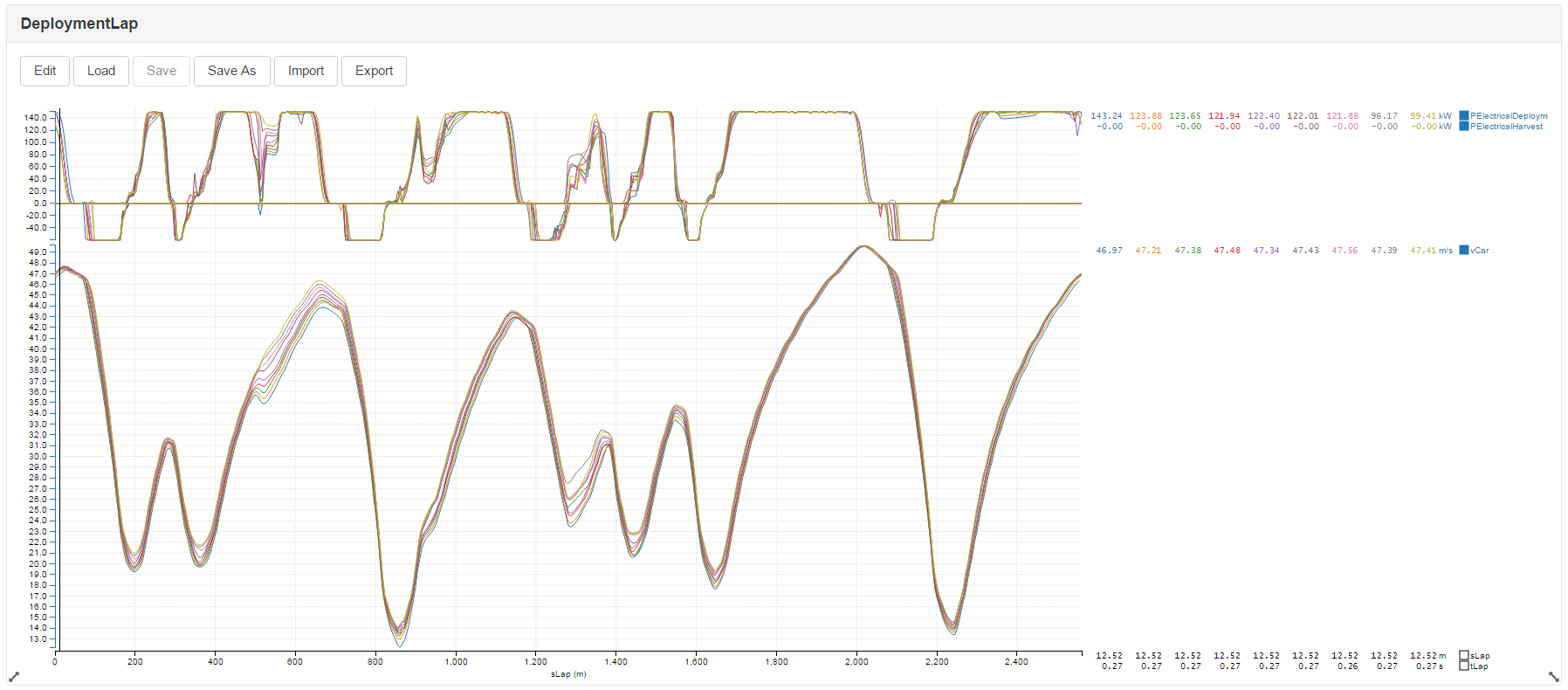
[post_title]
We’ve had a number of excellent client meetings in the last few weeks, but one question has come up sufficiently often that it now qualifies as a Frequently Asked Question, and deserves a quick blog post to answer it.
We’re pretty proud of our simulation, DeploymentLap™, which allows users to run lap time simulations which include optimal fuel saving (or optimal energy saving in the case of electric or hybrid cars). This is very powerful, as we can now run setup explorations covering 1,000s of setups, every single one of which will include optimal energy/fuel use. As far as we are aware the Canopy Platform is unique in being able to deliver this capability to clients.

Upon showing this to clients, they either react with amazement (our ideal scenario!), or alternatively variations on these comments:
- “Yes, but that’s according to the fuel saving/energy deployment rules you’ve written into the simulation”.
- “Can we modify the strategy to see if something other than lift or coast is faster?”.
We are still searching for the ideal phrasing which enables us to succinctly communicate the following: THERE ARE NO RULES!
All we ask our solver to achieve is the following:
- Don’t violate the track boundaries.
- Don’t violate the fundamental performance limits of the car.
- Don’t use more energy or fuel than the user says is available.
- Go as fast as possible.
As long as these four conditions are satisfied then any and all strategies for saving fuel or energy are open to the solver. This means that users can upload car definitions or tracks that the Canopy Simulations team have never dreamed of and still guarantee the best possible performance. If a solution other than lift and coast is better, then the solver will take it.
Now, coasting into everyone’s favourite corner for overtaking is unlikely to be a wise move; your rivals can trade a small amount of ultimate lap time for a great chance to get track position. We therefore allow clients to specify fuel-saving exclusion zones, in which the simulation is forced to drive flat-out. The simulation will then re-optimise fuel saving around the rest of the lap according to the same rules as before. We’re particularly pleased to have this functionality working, as it proved too difficult a problem to solve in our former lives writing simulations in F1.
Formula E is a very entertaining spectacle already, but we’ll be watching with even greater interest when the series kicks off again in Hong-Kong in 3 weeks, and the teams try to stretch their limited electrical energy over the complete race distance.
If you are interested in finding out more about Canopy Simulations please contact us at hello@canopysimulations.com or visit our website at http://www.canopysimulations.com/